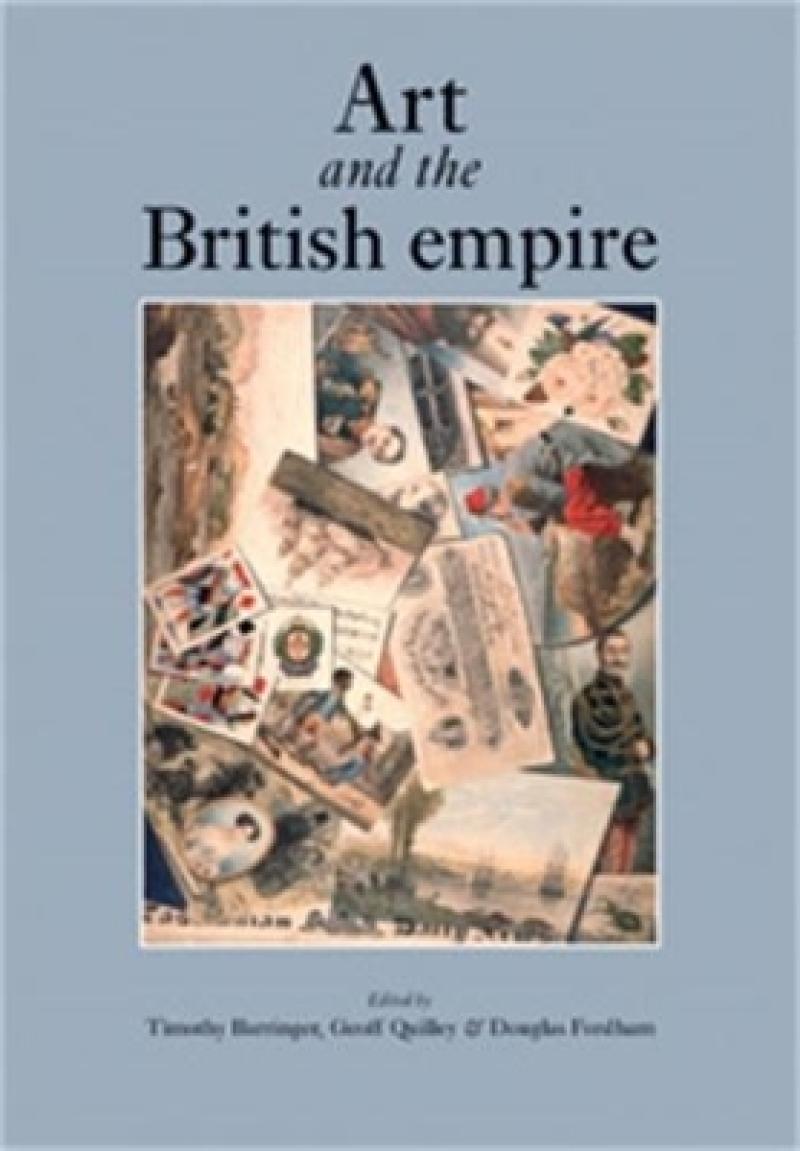This pioneering study argues that the concept of ‘empire’ belongs at the centre, rather than in the margins, of British art history. Recent scholarship in history, anthropology, literature and post-colonial studies has superseded traditional definitions of empire as a monolithic political and economic project. Emerging across the humanities is the idea of empire as a complex and contested process, mediated materially and imaginatively by multifarious forms of culture.
The twenty essays in Art and the British Empire offer compelling methodological solutions to this ambiguity, while engaging in subtle visual analysis of a previously neglected body of work. Authors from Australia, Canada, New Zealand, South Africa, the USA and the UK examine a wide range of visual production, including book illustration, portraiture, monumental sculpture, genre and history painting, visual satire, marine and landscape painting, photography and film. Together these essays propose a major shift in the historiography of British art and a blueprint for further research.
Part I: Settlers and Travellers
The Expanded Field of the Picturesque: Contested Identities and Empire in Sydney Cove 1794 – Ian MacLean
The Picturesque and the Palawa: John Glover’s Mount Wellington and Hobart Town from Kangaroo Point - David Hansen
John Septimus Roe and the Art of Navigation, c. 1815-1830 - Luciana Martins and Felix Driver
Colonial Illusions: Australasian Trompe-l’oeil Drawings - Roger Blackley
Ideas of ‘Home’ in South African Landscape Paintings by Thomas Bowler and Thomas Baines - Michael Godby
Part II: Metropolitan Views
Scalping: Social Rites in Westminster Abbey - Douglas Fordham
“Conquest, usurpation, wealth, luxury, famine”: Mortimer’s Banditti and the Anxieties of Empire - David H. Solkin
Ships of the Line: The Royal Academy Exhibition of 1784 - Eleanor Hughes
Uranian Imperialism: Boys and Empire in Edwardian England - Michael Hatt
Homo-exoticism: John Minton in London and Jamaica, 1950-1 - Simon Faulkner
Part III: Roles and Reversals
Critical Cosmopolitanism: Gifting and Collecting Art at Lucknow, 1775-1797 - Natasha Eaton
Storm in a Teacup? Visualizing Tea Consumption in the British Empire - Romita Ray
The Politics of Portraiture behind the Veil - Mary Roberts
A Veil of Truth and the Details of Empire: John Frederick Lewis’s The Reception - Emily M. Weeks
Imperial Masculinity, Mimicry, and the New Woman in Rhodes of Africa - Julie F. Codell
Part IV: Subject Formation
Savage Marks: Engraving and Empire in Thomas Harriot’s Briefe and True Report - Michael Gaudio
Always There: Aboriginal People and the Consolation of Miniature Portraiture in British North America - Kristina Huneault
Fractured Families: John Davis’s Photo-portraits of Robert Louis Stephenson and Family in Samoa - Leonard Bell
Gentlemen at Leisure: Riding Breeches in the Photographic Portrait Images of Black South African Men - Sandra Klopper
‘A Paralysis of Perspective’: Image and Text in the Creation of an African Chief - Jeff Guy
This pioneering study argues that the concept of ‘empire’ belongs at the centre, rather than in the margins, of British art history. Recent scholarship in history, anthropology, literature and post-colonial studies has superseded traditional definitions of empire as a monolithic political and economic project. Emerging across the humanities is the idea of empire as a complex and contested process, mediated materially and imaginatively by multifarious forms of culture.
The twenty essays in Art and the British Empire offer compelling methodological solutions to this ambiguity, while engaging in subtle visual analysis of a previously neglected body of work. Authors from Australia, Canada, New Zealand, South Africa, the USA and the UK examine a wide range of visual production, including book illustration, portraiture, monumental sculpture, genre and history painting, visual satire, marine and landscape painting, photography and film. Together these essays propose a major shift in the historiography of British art and a blueprint for further research.

